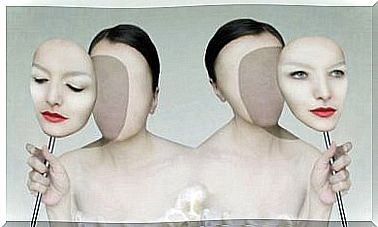Smiling More, Even If Unwillingly, Also Makes Us Happy

Smiling more is one of the points that many have adopted on their purpose list ; however, applying it can be more difficult than we think. Sometimes, we have to do it without feeling like it, relying on a hypothesis: being happy makes us smile, in the same way that smiling makes us happier.
The theory on which this premise is based is that the way we communicate with our bodies affects us emotionally. If we adopt a despondent and melancholy posture, it is very likely that we will also adopt this state of mind. Therefore, we can say that our non-verbal communication has “side effects” on us.
The functions of the smile
A smile is a universal gesture, which means it is shared by all of humanity. The curious thing is that it doesn’t just serve to show that we are happy or content. There are, in fact, three types of smiles:
- Smile of happiness: it ‘s the best known. It serves to communicate our happiness, to show the world that we are happy and feel satisfied or fulfilled.
- “Social” smile : This type of smile does not mean happiness, but it is used to convey security to those around us. With this smile we are communicating that we are trustworthy, that others have nothing to fear; it’s a smile we wear on the street, in the supermarket line… with people we don’t know.
- Superiority smile: with it, we want to convey arrogance and give ourselves importance in front of others. It is a proof of pride and also the manifestation of an idea in which we believed at that moment: we are above those around us.

smile more causes happiness
Although it’s hard to believe, adopting a relaxed and happy posture makes us feel, precisely, relaxed and happy. So, smiling more helps us to taste happiness. There is a study, carried out in the 1980s by Fritz Strack, that demonstrates this:
In the study, two groups of people were exposed to comic books that they were supposed to read with a pencil in their mouth. This pencil stimulated the greater zygomatic muscle, which causes the elevation of the cheekbones characteristic of a smile.
The pencil-holder group proved to be more sensitive to humorous content than the group that did not have the pencil, so it was concluded that physiologically replicating the smile gesture favors a positive mood.
As a result, a very influential theory in psychology was developed, which held that gesture led to emotion. Likewise, as was already known, the emotion produces the gesture.
Controversy related to the Strack study
However, after this first study, others were developed that tried to replicate the result. Unfortunately, none of them got such clear results, so currently the idea is questioned. There is no modern experiment that strongly supports the results of the Strack study.
In fact, if we replicate the experience at home, in front of a mirror, another known phenomenon is likely to intervene, this time often tested: the placebo effect. Thanks to this curious effect, we are able to experience results with processes, drugs or treatments that lack active ingredients or real efficacy.
Real exercises to make you smile (and happiness)
Faced with this situation, it is up to us to ask if there really are exercises to smile more and to be happier. Professor Laurie Santos, from Yale University, demonstrates this with the most popular course in the entire history of the university. In her course How to be happy , she describes 5 daily actions if we want to increase our subjective state of happiness:
1. Gratitude List
Several times a week, or even every night, we will write in a notebook or notebook for what we are grateful for. We can do this by answering the following questions: What do we have that makes us happy and/or who do we thank for their presence in our lives?
2. Quality sleep
It’s not about sleeping a lot, but sleeping effectively. With age, sleeping eight hours a day becomes practically a utopia. It seems that as we age we need less sleep and we also have more problems that make it difficult to fall asleep.
However, we all know what the benefits of a good rest are. It contributes to the proper functioning of our hormonal system, which in turn affects vital functions such as metabolism, digestion and concentration.

3. Meditation
With just 10 minutes of daily meditation, our mood will improve. The effectiveness of this practice is more than proven. Furthermore, it has an amazing quality: it improves mindfulness.
4. Time with the people you love
Spending time with the people we love helps us relax, let go of obligations and, ultimately, be happier. This happens because social connections and interpersonal relationships are related to moments of happiness: vacations, parties, celebrations, games…
5. Reduce time on social media
Inevitably, spending more time with the people you love means spending less time on other forms of communication. An example: when we exchange messages using screens.
It’s true that social networks have provided us with a multitude of benefits, but not without “real relationships” paying a price. Let’s think that, in terms of subjective perception of our quality of life, real connections are much more important. Because a smile of happiness is worth little if not to share it in addition to an emoticon.
And finally, don’t forget to smile more!









